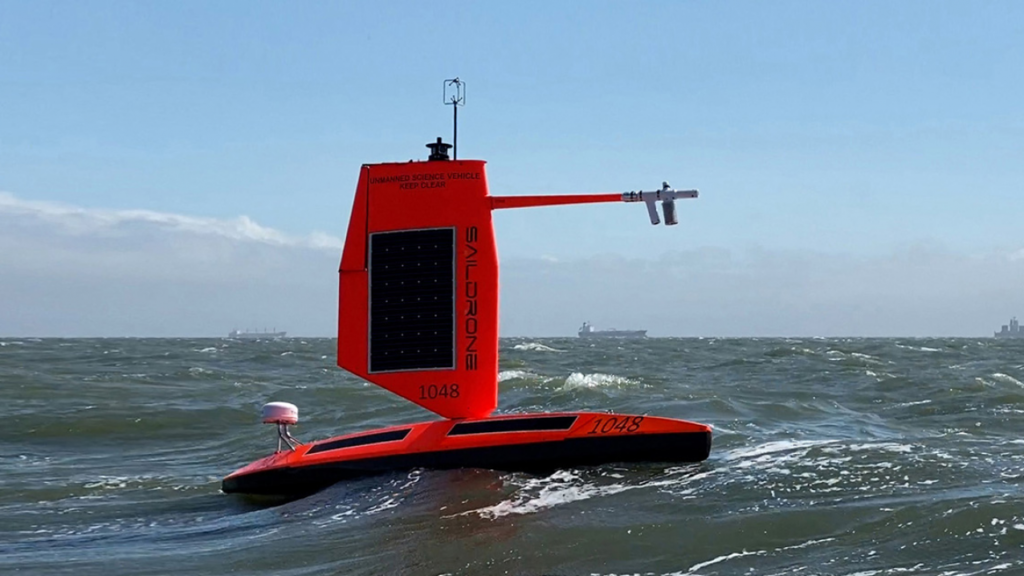The US National Oceanic and Atmospheric Administration (NOAA) has claimed that measuring salt in the ocean may be key to predicting hurricane intensity.
NOAA made the announcement after unveiling the preliminary results from its hurricane monitoring experiment conducted in partnership with uncrewed surface vehicle (USV) developer Saildrone.
Last year the partnership deployed five Saildrone Explorer USVs to the Tropical Atlantic Ocean to gather data during the 2021 hurricane season.
While NOAA has made steady progress in forecasting the track of a hurricane, progress has been slow in improving prediction of what’s called rapid intensification of hurricanes.
This is when the maximum wind speeds that drive a hurricane rapidly increase by 35 miles per hour or more in 24 hours or less.
A prime example was Hurricane Michael in 2018, a Category 5 hurricane that came ashore on the Florida Panhandle with 160mph winds, leading to 16 deaths and US$25bn in damages.
According to NOAA, one of the key ingredients for hurricanes to rapidly intensify is warm sea surface waters and these waters are sometimes prevented from cooling due to a lack of saltiness.
NOAA believes that freshwater from major rivers that flow into the ocean where hurricanes form and grow can create a layer on the surface of much warmer, fresher water. This layer can inhibit the saltier cooler ocean water from the deep from rising, and mixing and cooling the ocean. Without this cooling, hurricanes absorb more heat energy from the ocean and are more likely to strengthen rapidly, contributing to increasing winds.
This research comes at a time when scientists are predicting that climate change will make rapid intensification of hurricanes more frequent, especially in the Gulf of Mexico and along the east coast of Florida. Research shows that hurricanes that see winds rapidly intensify by 70mph in 24 hours happen once every 100 years but are projected to occur once every 5-10 years by 2100 if warming continues, said Greg Foltz, oceanographer and hurricane researcher at NOAA’s Atlantic Oceanographic and Meteorological Laboratory in Miami.
“The bottom line is that when salinity is lower in the ocean, rapid intensification is more likely,” Foltz added.
Scientists have observed this occurring in the western Caribbean and Atlantic near where large amounts of freshwater flow from the major rivers of the Amazon, Orinoco and Mississippi.
During last year’s hurricane season, NOAA teamed up with Saildrone to expand ocean observations of ocean salinity and temperature, with the goal of improving hurricane forecast models of the future. The USVs were equipped with sensors to track the exchange of energy between the ocean and atmosphere at the ocean surface. Five of the Saildrones were directed into the paths of major hurricanes over three months, transmitting near-real-time data to shore.
One Saildrone, SD 1045, made a historic mission into the eyewall of Category 4 Hurricane Sam in the Atlantic Ocean. The Saildrone spent 24 hours inside hurricane winds of more than 90mph and was buffeted by waves higher than 50ft.
The hurricane research also showed potential for using multiple, coordinated observing systems to obtain more detailed data on hurricanes as they form, transform and intensify.
“When we combine the Saildrone with additional assets like underwater gliders, we get a more complete picture of what’s going on in the ocean,” said Chris Meinig, director of engineering at NOAA’s Pacific Marine Environmental Laboratory in Seattle, Washington.
NOAA and Saildrone coordinated with a fleet of diving ocean gliders as well as NOAA Hurricane Hunter aircraft to collect data from nearly the same positions, at different levels of ocean and atmosphere.
The long-term goal is to have coordinated systems that can collect data within the ocean, at the surface and in the air near the ocean surface, and for this to be done using drones, from higher in the atmosphere via manned aircraft and from space using satellites, in order to gain a more complete understanding of the development of hurricanes.



